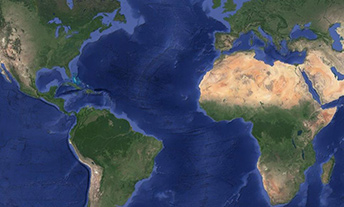
Bruce Murray (1931-2013)
Director, NASA's Jet Propulsion Laboratory
Bruce C. Murray (1931-2013), the Caltech professor of planetary science and geology who served as director of JPL from 1976 to 1982, died Aug. 29 at the age of 81. Murray was JPL’s director during the Viking landings on Mars and the early missions of Voyager 1 and 2 as the twin spacecraft flew by Jupiter and Saturn.
As director, Murray faced a rapidly shrinking budget as NASA’s priorities solidified around the space shuttle and its focus on taking astronauts and payloads to low Earth orbit. As the agency cut back its planetary program, he gained a substantial expansion of JPL’s civil affairs program with a large solar energy research project funded by the Department of Energy.
Murray also waged political battles in Washington to save the planetary program – and JPL. In 1979, Murray joined with the late astronomer Carl Sagan and engineer Louis Friedman to found the Planetary Society, a membership-based nonprofit organization dedicated to exploring the solar system and expanding public advocacy for space exploration.
Murray salvaged for JPL the Galileo mission to Jupiter, but lost the American half of the two-satellite International Solar Polar Mission (eventually launched with JPL instruments as the European Space Agency’s Ulysses by space shuttle Discovery) and a proposed U.S. mission to Halley’s comet. Murray also brought the American portion of the joint Netherlands/United Kingdom/U.S. Infrared Astronomy Satellite to JPL, and Caltech gained the project’s science data center.
In the midst of budget cuts in 1981, Murray struck a defiant note in an interview with Discover magazine. “We’re sitting here watching the coffin being nailed shut, and what’s inside is imagination and vision,” he told the publication. “I wasn’t appointed director to preside over the dissolution of the U.S. space exploration program … I’m not going to be squeezed down to nothing.”
During Murray’s leadership, JPL launched Seasat, one of the earliest Earth-observing satellites; the Solar Mesosphere Explorer, an Earth-orbiting spacecraft that investigated the ozone in Earth’s upper atmosphere; and Shuttle Imaging Radar-A, designed to fly aboard Space Shuttle Columbia as the first instrument that imaged Earth using radar pulses, rather than optical light, as illumination.
A strong advocate of planetary exploration, Murray disagreed with the focus of the Viking missions – the search for life on Mars – because he saw it as premature, thinking that without an adequate understanding of Martian surface chemistry, the biological instruments would not be able to provide unambiguous results.
After earning a Ph.D. in geology at MIT in 1955, Murray worked as a geologist for Standard Oil until 1958, then served two years in the U.S. Air Force. He came to Caltech in 1960, initially working in planetary astronomy, and soon became part of the imaging science team for JPL’s first two missions to Mars, Mariners 3 and 4. He served a similar role on Mariners 6, 7 and 9, using their imagery to begin constructing a geologic history for Mars.
Murray published more than 130 scientific papers and authored or co-authored seven books. After he retired as director in late 1982 Murray returned to Caltech’s Geological and Planetary Sciences Division, and was later named an emeritus professor at the campus.
Murray is survived by his wife, Suzanne Moss, five children and grandchildren.
Media contacts:
Jane Platt (818) 354-0880
Jet Propulsion Laboratory, Pasadena, Calif.
Where are they from?
Planetary science is a global profession.




























